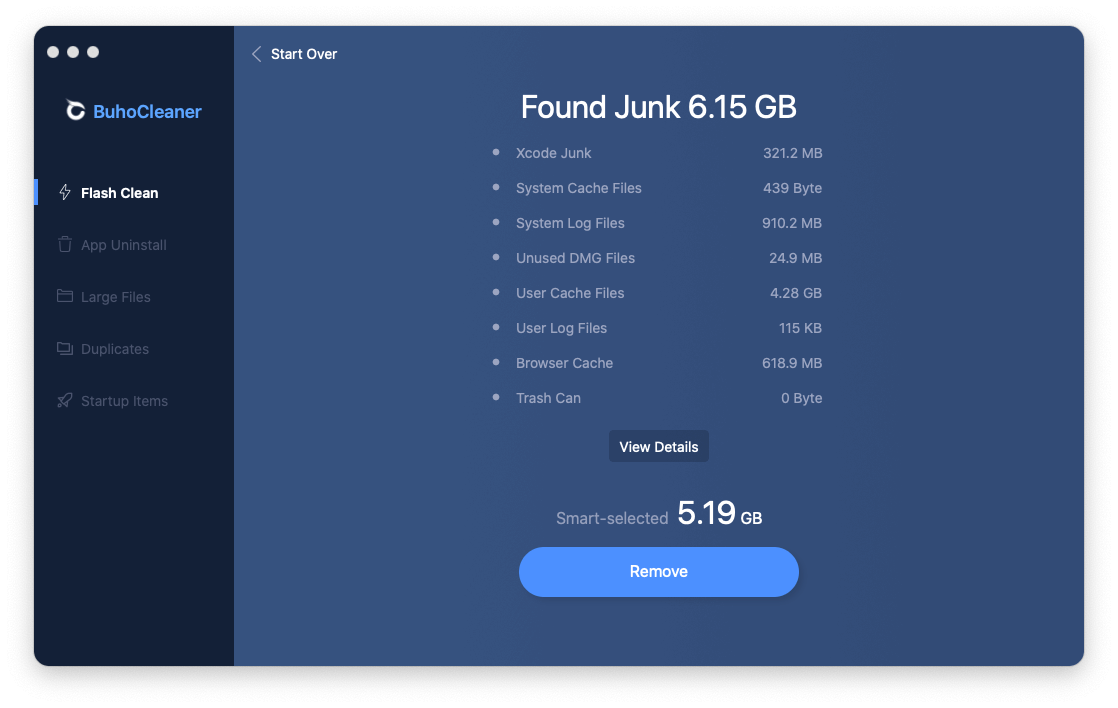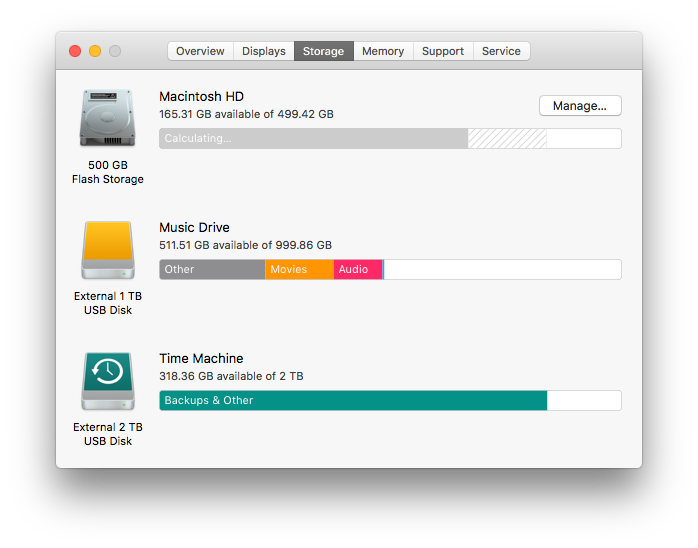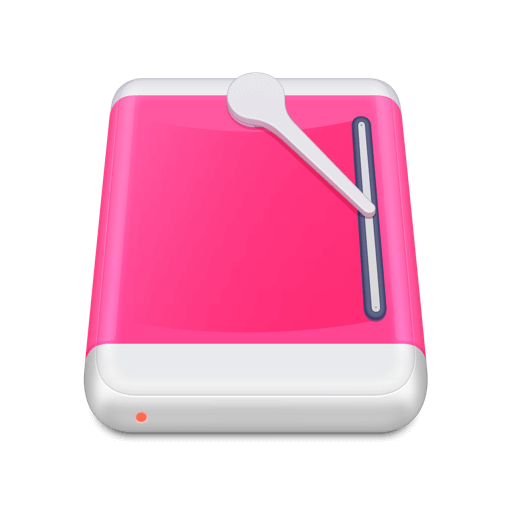Easy and Free tutorial on how to free up your Mac's hard drive. Simple download and you're done! Download it here:. Download and set up OneDrive Files On-Demand. Download and install OneDrive Files On-Demand for Mac. For new OneDrive accounts on macOS 10.14 Mojave and above, Files On-Demand is turned on by default when you set up OneDrive. Existing users will have Files On-Demand turned on when updating to macOS 12 Monterey.
- The HD Cleaner, available from the Mac App Store, lacks many features of the other apps in this guide, which can be assumed since it’s free. When you open a folder, the app begins to scan it. Then you may command it to Delete all the.
- Clear cache from Other Storage. As we mentioned above, most files in the Other category.
Even with all of the space some Mac users can enjoy - depending on the size of the hard drive you bought — they always run out of room eventually. Sooner or later, a Mac starts to slow down, even overheat, and the space you need is no longer there. Here are ways you can free up space when your Mac hard drive is full.
How to check Mac hard drive space
To start with, it always helps to know what is taking up so much space on your Mac before you start deleting files and folders. Samsung portable dvd writer model se-208 driver.

Click on the Apple icon in the top left corner
Select About this Mac > Storage
Another way to see what is taking up space is within System and User files. Next to every folder and application your Mac displays how much space everything uses and therefore makes it easier to judge what to delete.
What system files can be deleted safely?
Depending on your user habits, there could be tons of various junk on your Mac. Some of it can be safely destroyed because these files are either outdated or never been used.
How to find your biggest space hoggers
Yes, you could spend a few hours in Finder sorting your archives and documents. The problem is all folders in Finder look the same. Is there a quicker way to find out where is your space going? Yes, and it's called 'Space Lens.'
Space Lens is an amazing little tool that is part of CleanMyMac X. It creates the interactive map of your storage so you can explore it and at a glance see the largest space wasters. A quick way to see what is taking up so much space, and then in a few clicks, remove and delete anything taking up too much room, or that you've forgotten about and need to clear out.

- Get a free version of CleanMyMac X
- Launch the app and click Space Lens in the sidebar
These 'bubbles' are your folders of different size. You can even find the folders that are regularly hidden away.
How to clean up Mac hard drive space?
Here are few tips that would help you to unload your hard drive.
1. Delete unnecessary apps and games
Most of us will have games, apps and other content that is no longer needed taking up hard drive space. Even Mac’s, with as much memory as some of them are equipped with, run out of space eventually. If “Your disk is almost full” is a problem you’ve encountered, you need to follow these steps to free hard drive space on a Mac.
Go to the Applications folder.
Search through and see what you don't need anymore. Make a list of these, because once they're out of the Applications folder there is a chance you need to check in other places around your Mac to find other traces of the same apps, in case there are folders and system files stored elsewhere.
Drag-and-drop the unwanted apps and games into the Trash.
And then search in Library and other hidden folders for other traces and elements of the apps and games that you’ve deleted. Once you’re sure you’ve got everything, empty the Trash. It is also worth restarting your Mac, just to make sure you've removed everything and your Mac is operating at peak performance again.
2. Clear out duplicates
Duplicates can be lurking around hard drives in a number of ways.
Usually this is a problem when you’ve copied multiple documents, or more often than not, when you’ve got more than one of the same picture. Or many pictures that are very similar. Another way this is an issue is when you’ve got a Mac that used to have - or inherited from a previous Mac — an iPhotos album. Whereas macOS comes equipped with the Photos app, so there is a risk that your Mac is full of duplicate photos.
Before you delete the ones you don't need, make sure the ones you want are saved in the right folder, or moved over into an external or cloud-based hard drive. Then delete everything that is taking up too much space.
BTW, our favorite app to delete duplicates is Gemini 2 — give it a try.
3. Watch out for backups
The game of life online. Another problem that is commonly encountered on Mac’s are backups from iOS devices. Although most backups are now done in the cloud, there are still millions of Mac’s with iPod, iPhone and iPad backups still taking up hard drive space.
You should be able to find these within iTunes. If you want to delete them, close iTunes then go to the following folder within Library: ~/Library/Application Support/MobileSync/Backup.
Now you can take all of these unnecessary backups to the Trash, then empty it to free up space.
4. Empty Trash and email downloads
Another way to free up much-needed space is to empty to Trash, and clear out months or years worth of email Downloads. Once you’ve emptied the main Trash in the right-hand side of the Dock, it is also worth checking in the iTunes, Photos, Mail and iMovie applications - if you've used any of those recently - as they also have their own Trash functions, so make sure to clear those out too.
Whether or not you use Mail, or a third-party or browser-based email application, downloads go into the same folder. You could be sitting on months or years worth of downloads.
To see your Mail Downloads:
Open Finder, choose Go > Go to Folder..
Type in: ~/Library/Containers/com.apple.<strong>mail</strong>/Data/Library/<strong>Mail Downloads</strong>/
See what's inside and delete it if necessary.
5. Free up more space with CleanMyMac X
These are several third-party tools you can use to create more space on a Mac. It's entirely up to you to find the best cleaning partner for your Mac — but beware of scam Mac cleaners. When you see 'Your Mac is infected' message, don't fall for it — it's a trap.
But that said, there are also reliable junk removers, like CleanMyMac X. For example, CleanMyMac X is notarized by Apple and doesn't contain any malicious components.
Here is what CleanMyMac X can clean on your Mac:
- Large & Old files
- System Junk
- Unseen applications
- iTunes and Photo junk
The user interface looks like this:

According to the developer's site, an average user locates up to 74 GB of junk to clear out using the app.
CleanMyMac X is available for a free download here
Okay we've told you how to delete your apps, games, photos, and other folders taking up space. Hopefully, you can get your Mac working at peak performance again.
The Optimized Storage features of your Mac help you save storage space by storing your content in iCloud and making it available on demand:
- When storage space is needed, files, photos, movies, email attachments, and other files that you seldom use are stored in iCloud automatically.
- Each file stays right where you last saved it, and downloads when you open it.
- Files that you’ve used recently remain on your Mac, along with optimized versions of your photos.
If you haven't yet upgraded to macOS Sierra or later, learn about other ways to free up storage space.
Find out how much storage is available on your Mac
Choose Apple menu > About This Mac, then click Storage. Each segment of the bar is an estimate of the storage space used by a category of files. Move your pointer over each segment for more detail.
Click the Manage button to open the Storage Management window, pictured below.
Manage storage on your Mac
The Storage Management window offers recommendations for optimizing your storage. If some recommendations are already turned on, you will see fewer recommendations.
Store in iCloud
Click the Store in iCloud button, then choose from these options:
- Desktop and Documents. Store all files from these two locations in iCloud Drive. When storage space is needed, only the files you recently opened are kept on your Mac, so that you can easily work offline. Files stored only in iCloud show a download icon , which you can double-click to download the original file. Learn more about this feature.
- Photos. Store all original, full-resolution photos and videos in iCloud Photos. When storage space is needed, only space-saving (optimized) versions of photos are kept on your Mac. To download the original photo or video, just open it.
- Messages. Store all messages and attachments in iCloud. When storage space is needed, only the messages and attachments you recently opened are kept on your Mac. Learn more about Messages in iCloud.
Storing files in iCloud uses the storage space in your iCloud storage plan. If you reach or exceed your iCloud storage limit, you can either buy more iCloud storage or make more iCloud storage available. iCloud storage starts at 50GB for $0.99 (USD) a month, and you can purchase additional storage directly from your Apple device. Learn more about prices in your region.
Optimize Storage
Click the Optimize button to save space by automatically removing watched movies and TV shows. When storage space is needed, movies or TV shows that you purchased from Apple and already watched are removed from your Mac. Click the download icon next to a movie or TV show to download it again.
Your Mac will also save space by keeping only recent email attachments on this Mac when storage space is needed. You can manually download any attachments at any time by opening the email or attachment, or saving the attachment to your Mac.
Optimizing storage for movies, TV shows, and email attachments doesn't require iCloud storage space.
Empty Trash Automatically
Empty Trash Automatically permanently deletes files that have been in the Trash for more than 30 days.

Reduce Clutter
Reduce Clutter helps you identify large files and files you might no longer need. Click the Review Files button, then choose any of the file categories in the sidebar, such as Applications, Documents, Music Creation, or Trash.
You can delete the files in some categories directly from this window. Other categories show the total storage space used by the files in each app. You can then open the app and decide whether to delete files from within it.
Learn how to redownload apps, music, movies, TV shows, and books.

Where to find the settings for each feature
The button for each recommendation in the Storage Management window affects one or more settings in other apps. You can also control those settings directly within each app.
- If you're using macOS Catalina or later, choose Apple menu > System Preferences, click Apple ID, then select iCloud in the sidebar: Store in iCloud turns on the Optimize Mac Storage setting on the right. To turn off iCloud Drive entirely, deselect iCloud Drive.
- If you're using macOS Mojave or earlier, choose Apple menu > System Preferences, click iCloud, then click Options next to iCloud Drive. Store in iCloud turns on the Desktop & Documents Folders and Optimize Mac Storage settings.
- In Photos, choose Photos > Preferences, then click iCloud. Store in iCloud selects iCloud Photos and Optimize Mac Storage.
- In Messages, choose Messages > Preferences, then click iMessage. Store in iCloud selects Enable Messages in iCloud.
Clean Up Mac Hard Drive Free Agent
- If you're using macOS Catalina or later, open the Apple TV app, choose TV > Preferences from the menu bar, then click Files. Optimize Storage selects “Automatically delete watched movies and TV shows.”
- In you're using macOS Mojave or earlier, open iTunes, choose iTunes > Preferences from the menu bar, then click Advanced. Optimize Storage selects “Automatically delete watched movies and TV shows.”
- In Mail, choose Mail > Preferences from the menu bar, then click Accounts. In the Account Information section on the right, Optimize Storage sets the Download Attachments menu to either Recent or None.
Empty Trash Automatically: From the Finder, choose Finder > Preferences, then click Advanced. Empty Trash Automatically selects “Remove items from the Trash after 30 days.”
Other ways that macOS helps automatically save space
Clean Macbook Air Hard Drive
With macOS Sierra or later, your Mac automatically takes these additional steps to save storage space:
- Detects duplicate downloads in Safari, keeping only the most recent version of the download
- Reminds you to delete used app installers
- Removes old fonts, languages, and dictionaries that aren't being used
- Clears caches, logs, and other unnecessary data when storage space is needed
How to free up storage space manually
Even without using the Optimized Storage features described in this article, you can take other steps to make more storage space available:
- Music, movies, and other media can use a lot of storage space. Learn how to delete music, movies, and TV shows from your device.
- Delete other files that you no longer need by moving them to the Trash, then emptying the Trash. The Downloads folder is good place to look for files that you might no longer need.
- Move files to an external storage device.
- Compress files.
- Delete unneeded email: In the Mail app, choose Mailbox > Erase Junk Mail. If you no longer need the email in your Trash mailbox, choose Mailbox > Erase Deleted Items.
Learn more
- The Storage pane of About This Mac is the best way to determine the amount of storage space available on your Mac. Disk Utility and other apps might show storage categories such as Not Mounted, VM, Recovery, Other Volumes, Other, Free, or Purgeable. Don't rely on these categories to understand how to free up storage space or how much storage space is available for your data.
- When you duplicate a file on an APFS-formatted volume, that file doesn't use additional storage space on the volume. Deleting a duplicate file frees up only the space required by any data you might have added to the duplicate. If you no longer need any copies of the file, you can recover all of the storage space by deleting both the duplicate and the original file.
- If you're using a pro app and Optimize Mac Storage, learn how to make sure that your projects are always on your Mac and able to access their files.